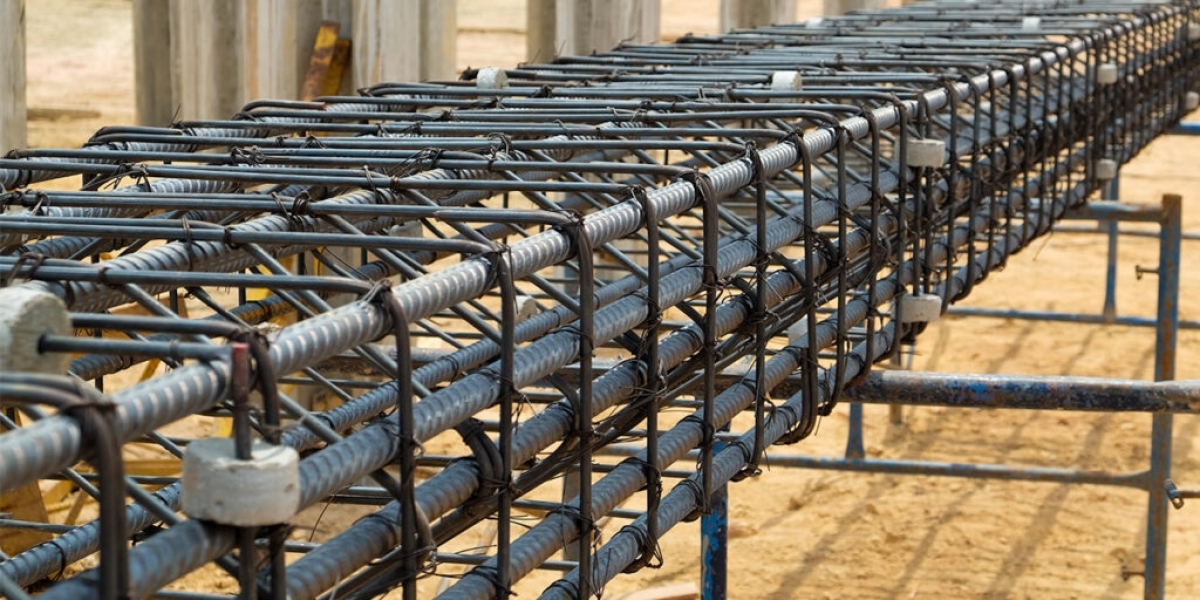Reinforced concrete has become a fundamental material in modern construction, enabling the creation of skyscrapers, bridges, dams, and countless other infrastructure projects. At the heart of reinforced concrete lies a critical but often overlooked process: rebar detailing. This essential step ensures the structural integrity and longevity of concrete structures. In this article, we’ll explore what rebar detailing is, why it matters, and how it fits into the broader context of construction engineering.
What Is Rebar Detailing?
Rebar detailing is the process of preparing detailed drawings and documentation that specify the placement, size, quantity, bending shape, and spacing of steel reinforcement bars (commonly known as rebar) within concrete structures.
These detailed drawings are used by contractors and steel fabricators to correctly install rebar in accordance with structural and architectural design requirements. The process involves converting complex structural engineering drawings into clear, practical, and precise instructions that can be followed on the construction site.
Importance of Rebar in Construction
Concrete is incredibly strong in compression but weak in tension. To compensate for this weakness, steel reinforcement bars are embedded within the concrete. Rebar provides the necessary tensile strength, making reinforced concrete a composite material that is strong in both compression and tension.
However, simply embedding steel in concrete isn't enough. For the reinforcement to perform its intended role, it must be accurately positioned. That’s where rebar detailing becomes critical.
Why Rebar Detailing Matters
Rebar detailing plays a pivotal role in ensuring the safety, durability, and cost-effectiveness of construction projects. Here’s why it matters:
1. Structural Safety
Improper rebar placement can lead to catastrophic structural failures. Rebar detailing ensures that every bar is correctly positioned according to the structural engineer’s design, maintaining the structural integrity of the building.
2. Cost Control
Accurate detailing reduces material wastage and prevents costly rework. It allows contractors to order the exact quantity of steel required, minimizing excess and avoiding shortages.
3. Construction Efficiency
Detailed rebar drawings simplify the on-site installation process. They eliminate guesswork, reduce installation time, and improve coordination between teams.
4. Compliance With Codes and Standards
Rebar detailing ensures that the design adheres to local and international building codes, such as ACI (American Concrete Institute) or BS (British Standards).
The Rebar Detailing Process
The rebar detailing process typically follows these steps:
Step 1: Review Structural Drawings
The detailing team starts by studying the structural engineer’s drawings and specifications. This includes understanding load paths, bar sizes, required spacing, and reinforcement types.
Step 2: Create Bar Bending Schedules (BBS)
A Bar Bending Schedule is a tabular representation that lists each rebar’s shape, length, size, quantity, and bending angles. The BBS serves as a bridge between engineering drawings and fabrication.
Step 3: Generate Rebar Shop Drawings
Shop drawings are created using detailing software. These drawings show the layout of the rebars within structural elements like slabs, beams, columns, and footings. They include section views, details of overlaps (laps), hooks, and development lengths.
Step 4: Coordination With Other Trades
Rebar detailers coordinate with other disciplines (such as MEP—mechanical, electrical, and plumbing) to avoid conflicts and ensure the reinforcement does not interfere with embedded services.
Step 5: Quality Checks and Final Approval
Before finalizing, the drawings go through multiple checks for accuracy, code compliance, and constructability. After approval, the drawings are released for fabrication and construction.
Tools and Software Used in Rebar Detailing
Modern rebar detailing is largely done using specialized CAD (Computer-Aided Design) and BIM (Building Information Modeling) software. Some popular tools include:
AutoCAD with Rebar Extensions
Tekla Structures
Revit with Rebar Modeling
Bentley ProStructures
CADS RC
These tools enhance precision, allow 3D visualization, and facilitate collaboration across teams.
Challenges in Rebar Detailing
Despite its importance, rebar detailing comes with several challenges:
Complex Geometry: Modern structures often feature curves and irregular shapes that require intricate detailing.
Tight Deadlines: Construction schedules can be aggressive, demanding fast turnaround on detailing work.
Coordination Errors: Miscommunication between structural engineers, detailers, and contractors can lead to costly errors.
Software Limitations: While software has improved, it still requires skilled professionals to interpret design intent and manage detailing complexities.
Best Practices for Effective Rebar Detailing
To overcome these challenges and ensure high-quality detailing, the following best practices are recommended:
Early Collaboration: Involve detailers early in the design process to identify potential issues.
Adhere to Standards: Follow relevant building codes and detailing standards meticulously.
Double-Check Dimensions: Always cross-verify dimensions and reinforcement positions.
Use 3D Modeling: Leverage BIM tools to visualize complex layouts and detect clashes early.
Maintain Clear Documentation: Ensure all drawings and schedules are well-organized and easily accessible.
The Role of Rebar Detailers
Rebar detailers are highly skilled professionals who combine engineering knowledge with practical construction understanding. They act as a bridge between the structural engineer’s vision and the site worker’s implementation. Detailers need strong analytical skills, attention to detail, and proficiency with CAD/BIM tools.
Real-World Applications
Some major projects that depend heavily on rebar detailing include:
High-rise buildings: Where seismic loads require precise reinforcement for safety.
Bridges and overpasses: That must withstand dynamic and environmental stresses.
Water treatment plants: Which involve complex tanks and containment structures.
Industrial facilities: Where heavy equipment loads demand robust reinforcement.
In each of these, rebar detailing ensures the reinforcement is both structurally sound and constructible.
Conclusion
Rebar detailing may be behind the scenes, but it is a cornerstone of modern construction. Without it, even the most well-designed structures could be compromised during execution. As construction projects become increasingly complex, the need for accurate, efficient, and collaborative rebar detailing continues to grow.
By recognizing its value and investing in skilled detailers and advanced tools, stakeholders in the construction industry can ensure safer structures, reduced costs, and smoother project execution.





